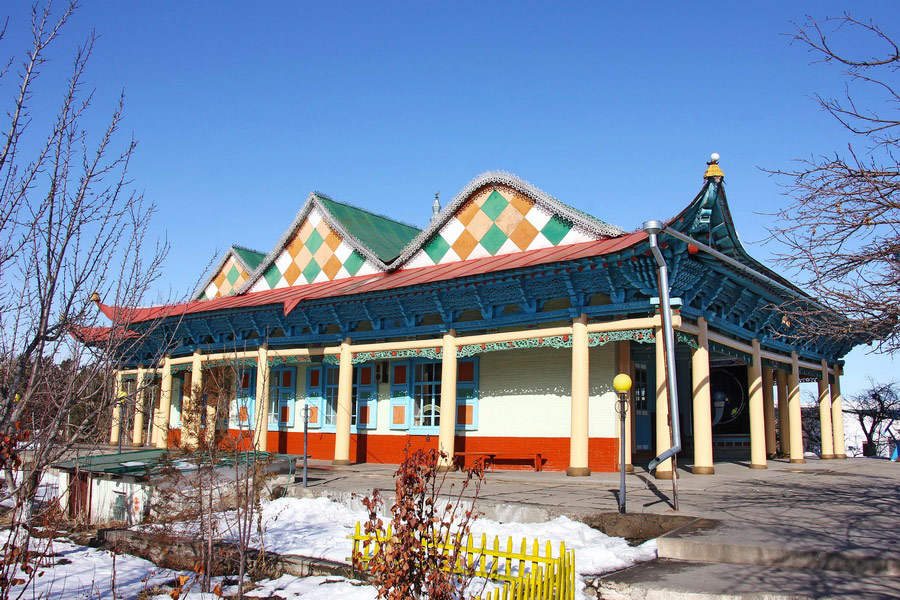Dungan Mosque, Karakol

The Dungan Mosque is a striking example of Karakol's distinctive architecture and serves as one of the city's principal Islamic centers. Named after the Dungan people - Sunni Muslims of Chinese origin who migrated to Central Asia in the XIX century - the mosque stands out for its ornate decoration and wealth of handcrafted details. Most remarkable is the fact that the entire structure was assembled from thousands of wooden components without a single nail, showcasing the exceptional craftsmanship of the Dungan builders.
History
The mosque's history is closely tied to the legacy of the Dungan community in the Turkestan region, whose mass migration occurred at the end of the XIX century. In November 1877, a group of Dungan refugees arrived in Karakol after fleeing China. There, they established a community and initiated the construction of a mosque. Renowned master Zhou-Sy was commissioned for the project, arriving with a team of 30 skilled architects. The planning phase took about three years, while the actual construction was completed in just three months - a testament to the project's remarkable coordination and efficiency.
During the Soviet era, the mosque remained largely unchanged, preserving its original aesthetic. Although the minaret was lost in the 1930s, it was reconstructed a decade later.
Architecture
The architectural design of the mosque reveals strong Buddhist influences, visible not only in its structure but also in its vivid color palette. Red is believed to ward off evil spirits, yellow represents wealth and good fortune, and green symbolizes prosperity and happiness. The true marvel of the mosque, however, lies in its construction technique: the entire building was erected without nails, relying solely on wooden joints. Fir beams from the Tien Shan valleys were used for the framework, while walnut wood was employed for the finely carved interior decorations.
Today, the Dungan Mosque remains an active place of worship and a treasured cultural and historical site in Karakol. Protected as an architectural monument, it continues to draw both pilgrims and thousands of tourists each year.
